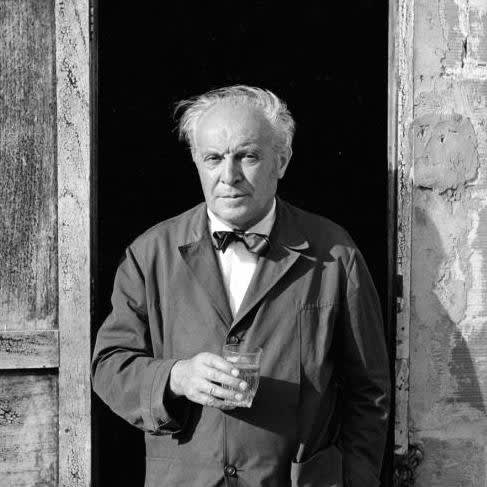"The architect (the artist) must imagine for each window, a person at the sill; for each door, a person passing through; for each stair, a person going up or down; for each portico, a person loitering; for each foyer, two people meeting; for each terrace, somebody resting; for each room, somebody living within."
-Gio Ponti
Career
Ponti played a major role in the modernisation of Italian decorative arts and his influence was cemented by his involvement in the Monza Biennials and the Milan Triennials. Throughout his career, Ponti started numerous collaborations, notably with the silverware company Christofle, the glassmakers Venini and Fontana Arte, enameller Paolo De Poli, papier-mâché artists the Dal Monte brothers, the ceramist Pietro Melandri, the porcelain manufacturer Richard Ginori and the Venini glass factory. His goal with many of these collaborations was to showcase the unique work of the exceptional craftsman.
Ponti began his architectural career in partnership with Mino Fiocchi and Emilio Lancia from 1923 through 1927, and then through 1933 with Lancia only, as Studio Ponti e Lancia PL. In 1925, Ponti participated in the International Exhibition of Modern Decorative and Industrial Arts in Paris, with a porcelain manufacturer. On this occasion, he made friends with Tony Bouilhet, director of the silversmith company Christofle. The Bouilhet family entrusted him with his first architectural commission abroad and provided an opportunity for Ponti to experiment with his personal conception of the Italian-style house. The 1930s were years of intense activity for Ponti as he was involved in many projects, particularly in his native city of Milan. With the construction of the Borletti funeral chapel in 1931, he started to adopt a modernist shift. By removing all ornament, Ponti moved towards formal simplification where he sought to make style and structure coincide.
